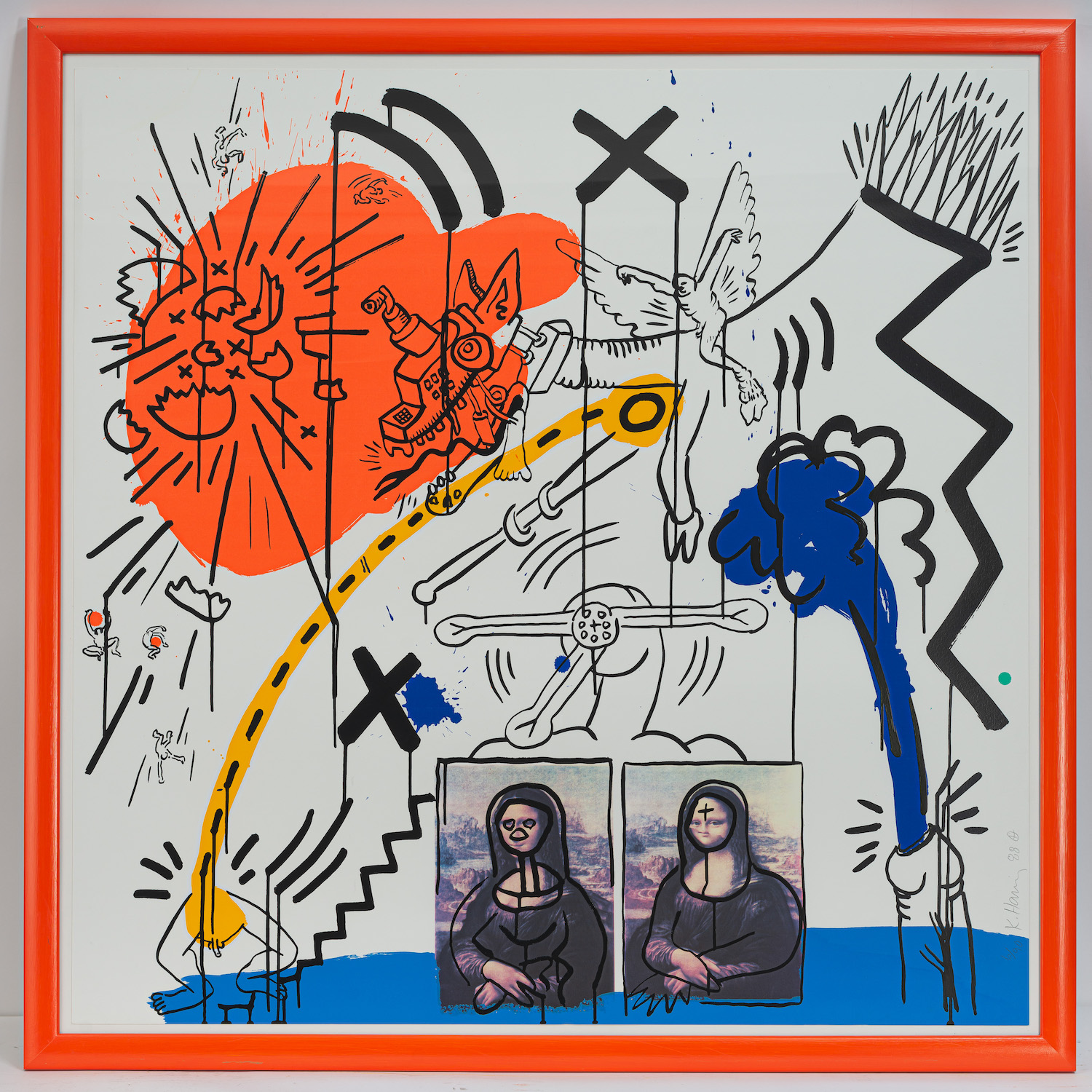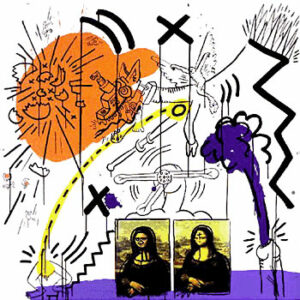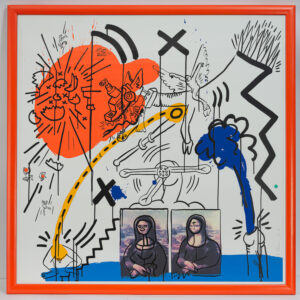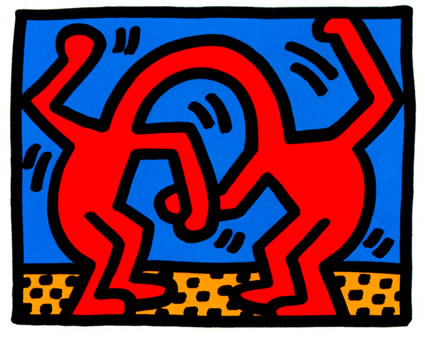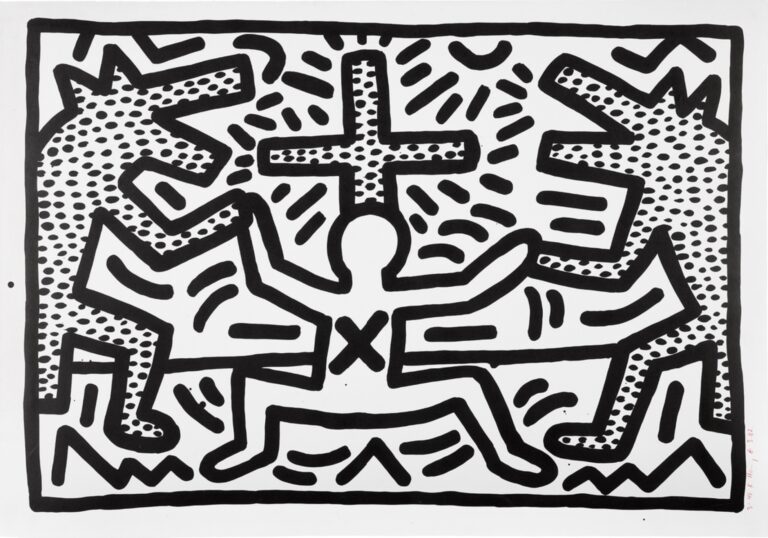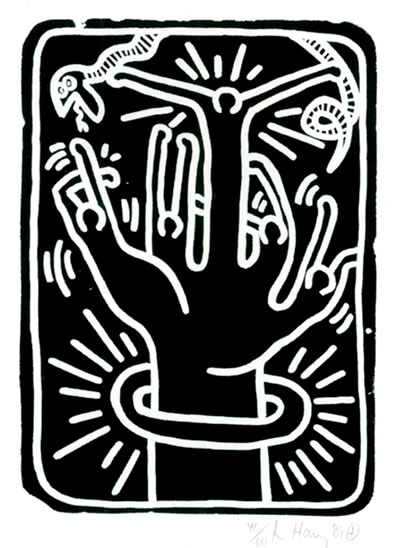Apocalypse (2) is a provocative artwork by Keith Haring, drawing heavily from the poetic and dystopian visualizations in William Burroughs‘s text. The vivid description, which speaks of “The planet pulling loose from its moorings, careening into space” and “Iron penis chimneys ejaculate blue sparks,” is masterfully represented in Haring’s rendition.
Page 2
The planet is pulling loose from its moorings, careening into space, spilling cities and mountains and seas into the Void, spinning faster and faster as days and nights flash by like subway stations. Iron penis chimneys ejaculate blue sparks in a reek of ozone, tunnels crunch down teeth of concrete and steel, flattening cars like beer cans. Graffiti eats through glass and steel like acid, races across the sky in tornados of flaming colors.
Against a stark white background, bold black lines emanate an ink-bleed effect, standing in contrast to the thin lines that sketch out bizarre, cartoon-like images. Prominent among these is a machine with a dragon’s head and an angelic rider atop, likely symbolizing a chaotic mix of the technological and the divine. The burst eggshell could be an emblem of fragile birth or rebirth in this chaotic world. Disembodied legs descend a staircase, reminiscent of Duchamp’s Nude Descending a Staircase, but with a more ominous feel, and a strong industrial visual is presented through an “iron penis chimney,” spewing out a plume of purple smoke. The phallic propeller floating on a cloud could be a nod to man’s ambitions and drive.
The piece uniquely incorporates collage elements, specifically, two images of Da Vinci’s “Mona Lisa” or “La Gioconda.” The inclusion of this iconic figure serves a dual purpose. Firstly, given the name “Mona” being a diminutive of “Madonna,” it could be hinting at Catholic symbolism, a recurring theme in Haring’s work. Secondly, as a stalwart of art history and an image that has been reinterpreted by Warhol and Duchamp, its presence is a reminder of art’s cyclical nature and the constant dialogue between artists across eras. The cartoonish black lines tracing the contours of “La Gioconda” lend her an almost mocking, irreverent look, pushing viewers to rethink established icons and their place in contemporary art.
This composition, with its juxtaposition of classical and contemporary, religious and profane, serves as a testament to Haring’s genius, reflecting a world both in disarray and in constant conversation with its past.


